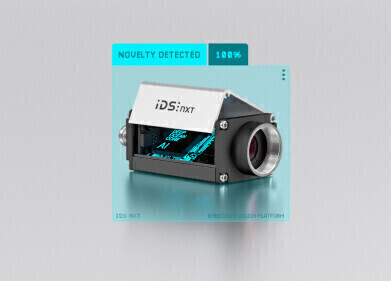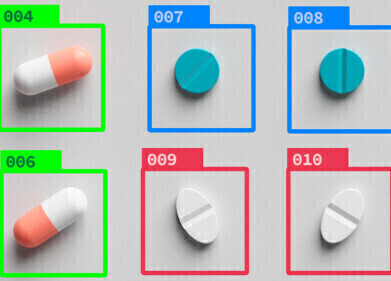Laboratory Products
Intelligent cameras in the service of health: How businesses benefit and get started
Sep 05 2023
Artificial intelligence (AI) plays a key role in the digital age. Self-learning algorithms have the potential to improve processes and be used laboratory analysis and diagnostics. This is also due to the fact that classical image processing solutions work with a fixed set of rules, making varying or rapidly changing objects a major challenge. AI, on the other hand, can handle such cases effortlessly. So where are the challenges to this technology? And is there an easy way to get started?
The hurdle for the application of AI-based image processing solutions is still quite high. They usually require expertise, programming efforts and investment in computer and storage hardware. Not only training a neural network, but also using it and evaluating the results require knowledge of hardware, software and interfaces. This poses challenges for many companies. IDS shows that it can be done differently: The IDS NXT AI vision system comes with all the necessary tools and workflows, allowing users to easily build intelligent vision solutions. Using the IDS lighthouse Cloud software, even users with no prior knowledge of artificial intelligence or camera programming can train a neural network. Since it is a web application, all functions and the necessary infrastructure are immediately available.
The engineer or programmer does not need to set up his own development environment, but can immediately start training his own neural network. Three basic steps are required for this: Uploading sample images, labelling the images and starting the automatic training. The network can then be executed on the IDS NXT industrial cameras, which are capable of delivering the desired information or passing commands to connected machines via REST or OPC UA.
Driving force behind current developments
No other component collects and interprets as much data as image processing. It enables what is seen, such as object characteristics (e.g. form, size), states ("presence/absence") or quality (“ok/not ok”), to be monitored, processed and the results passed on to the value-added systems in the network. Artificial intelligence adds another layer to image processing, and comes into play when qualitative decisions need to be made. This opens up completely new applications. Automation with smart cameras also offers the possibility of reacting more flexibly to difficult market conditions while guaranteeing consistently high quality and efficiency. Companies for whom the leap to end-to-end digitisation and automation is too great can make significant progress thanks to AI-based image processing. Holistic, user-friendly systems such as IDS NXT pave the way for this.
Evaluate applications with a practical kit
Anyone who wants to test the potential of cameras and AI for their own applications should take a closer look at the IDS NXT Experience Kit. From camera to software licence, it contains all the components needed to create, train and run a neural network on IDS NXT cameras. The use of Deep Learning-based image processing can therefore be evaluated and realised in a short time. Why not give it a try?
Digital Edition
ILM 49.5 July
July 2024
Chromatography Articles - Understanding PFAS: Analysis and Implications Mass Spectrometry & Spectroscopy Articles - MS detection of Alzheimer’s blood-based biomarkers LIMS - Essent...
View all digital editions
Events
Jul 28 2024 San Diego, CA USA
Jul 30 2024 Jakarta, Indonesia
Jul 31 2024 Chengdu, China
ACS National Meeting - Fall 2024
Aug 18 2024 Denver, CO, USA
Aug 25 2024 Copenhagen, Denmark



-(1)-(1).jpg)


24_06.jpg)













